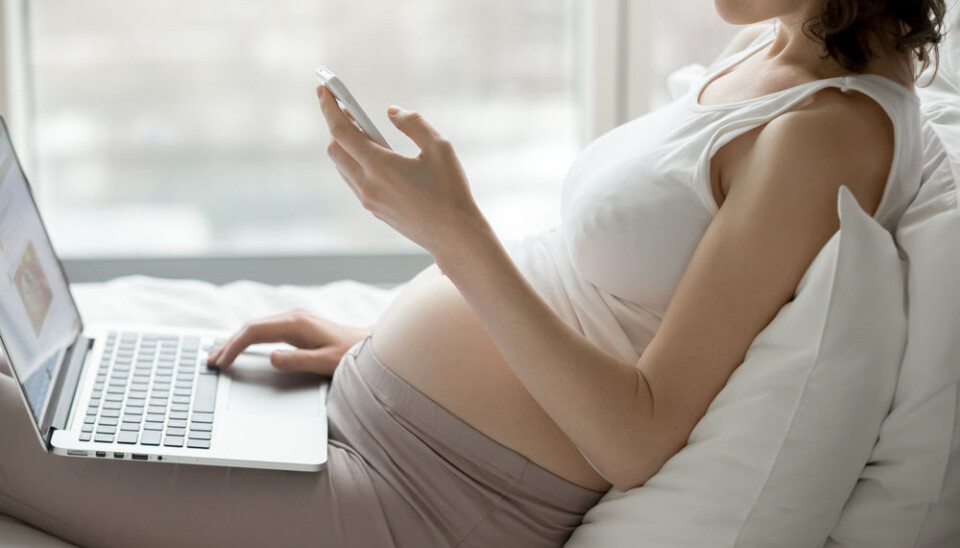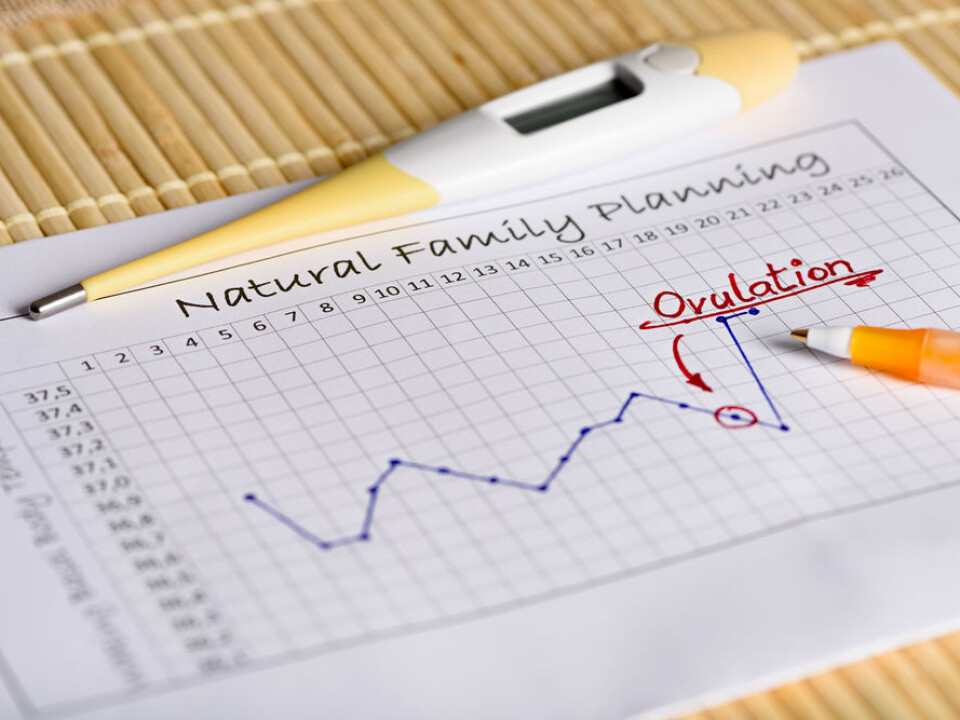
Birth control app invented by physicists gets EU approval
A mobile app is now officially certified as a contraceptive by a European regulatory body. Studies show it is as effective as the contraceptive pill.
The mobile app Natural Cycles has become the first and only fertility monitoring app to be certified by an EU regulatory body as a form of contraception. That means doctors could soon be recommending the app to patients who want help to plan or avoid a pregnancy.
The app is the brainchild of former CERN physicist Dr Elina Berglund, who first developed the algorithm to predict her own ovulation and fertility, before developing it into an app with her husband and Natural Cycles co-founder Dr Raoul Scherwitzl, himself a former physicist.
“For women across Europe who are looking to plan or prevent pregnancy, they now have a certified app, which means more choice, more freedom, and also the possibility of planning and preventing pregnancy without all of those hormones in their bodies through traditional contraceptive means, such as hormonal birth control--the pill, basically,” says Harry Cymbler, a spokesperson for Natural Cycles.
Dr Susan Walker, a senior lecturer in sexual health from Anglia Ruskin University, who is familiar with the app and the two clinical studies that supported its recent regulatory approval in the EU, says that there are many fertility awareness apps available but that Natural Cycles is the first to receive formal classification as contraception.

And unlike other fertility monitoring apps, the team behind Natural Cycles have joined up with scientists from the Karolinska Institutet in Sweden, to validate the algorithm’s ability to predict ovulation and the fertile window and the effectiveness of the app as a contraceptive in two clinical studies.
How does the app work?
The app works using Berglund’s own algorithm, which tracks woman’s body temperature to calculate the date of ovulation, and based on that, her window of fertility. Users measure their temperature each day and enter it into the app.
Based on this data, the app can tell the user if it is a “green day,” which is outside the fertile window and therefore safe to have unprotected sex, or a “red day,” which is within the fertile window, where the couple are at risk of pregnancy.
“Basically, the algorithm analyses temperature data to detect the rise in ovulation. There’s one day per cycle where the woman can get pregnant, which is the ovulation day. And since sperm survival is up to five days, there’s a window of six days where a woman is at risk of getting pregnant if she has unprotected intercourse,” says co-founder Dr Raoul Scherwitzl.
“The key is to actually predict and identify ovulation, and the best way to determine that ovulation has happened is by tracking the temperate, because it indirectly measures the progesterone level in the woman’s body,” he says.
Read More: Norway and Iceland use hormonal contraceptives the least
Scepticism among Danish doctors
The app is already actively used by over 150,000 women throughout the world, including Sweden where the company is based, and the rest of Europe, including Denmark and Norway. But what do doctors think about it?
Thomas Larsen, MD, Head of Department at Aalborg University Hospital, Denmark is sceptical of the effectiveness of fertility apps in general.
“It’s not a part of our clinical life and I don’t think it will be. I don’t know much about this app in particular, but in general we know that this mind-set about birth control in a “natural” and “safe” way isn’t realistic. There are just so many variables,” says Larsen.
“Your body temperature varies by what you eat, or if you have a cold. There are many factors that affect these readings. Also hormone changes can shift your regular rhythm, but apps don’t take that into consideration,” he says.
Walker is more optimistic.
Assuming a couple use the app perfectly and follow its advice completely, the risk of pregnancy is 5 in 1,000. This is comparable to failure rates for the hormonal contraceptive pill, says Walker.
Read More: Contraception influences sexual desire in committed relationships
“There’s nothing new here”
“The idea that you’re able to identify the optimal pregnancy period in a woman’s cycle is far from new. The temperature methods have been used for more than 30 years. So if there is something new, it’s that the app makes it easier to use,” says Clinical Professor Øjvind Lidegaard from the Department of Clinical Medicine at the University of Copenhagen, Denmark.
But again, Lidegaard has no direct experience with the app itself.
“We haven’t taken any formal decision in Denmark. But these apps aren’t new. There are several apps that combine a menstrual planner and daily temperature measurements to identify the one week per month where women could get pregnant and therefore indicate that they should use some protection. It’s not a new concept. It’s perhaps better than previous apps, but I haven’t tested it myself,” says Lidegaard.
Read More: Multiple abortions despite use of contraceptives
What makes this app different to other fertility monitoring apps?
The algorithm does more than just track temperature, says Scherwitzl. It sorts out the fluctuations in temperature that are not considered to be related to ovulation, such as a poor night sleep, or a user’s particular exercise regime.
And this is where their background in physics helped, he says.
“We’re both former physicists, Elina, my wife [and co-founder] was also at CERN looking for the Higgs Boson, and it’s kind of the same thing. You have a big messy signal with peaks everywhere and then you have a tiny little bump in there and you need to identify whether that is a real thing or not. That’s where our algorithm comes in,” he says.
The algorithm automates the process, picking out the temperature data not related to ovulation, and predicts an estimated ovulation date with an associated uncertainty to avoid a green day occurring within or close to the fertile window.
And it is these predictions aimed at giving contraceptive advice that makes this app in particular stand out from other fertility monitoring apps, he says. “Other fertility apps allow women to log all of these indicators—temperature, mensuration, and they make some basic calculations, but they don’t commit to their recommendations,” he says. “So we take a responsibility on us. The data analysis is on us, so we make sure that we’re right.”
Read More: Sex education is failing young people
The app learns about your cycle
But no matter how automated the app itself is, women still need to invest time every morning to upload their own data to feed information into the algorithm so it can predict ovulation.
“You have to take your temperature every day. And you have to think about whether you can have sex or not. So in that sense you can say, ‘well, why not just use a condom all the time?’” says Larsen.
If you forget to take your temperature in the morning or you choose to ignore the app’s advice for one reason or another and have unprotected sex on a red day, the risk of pregnancy obviously goes up.
But even so, this is comparable with other forms of contraception, says Walker.
For this type of so-called “typical use” the failure rate jumps to 7 pregnancies in 100 women using the app. This is still comparable to other forms of contraceptives, she says.
“With the combined contraceptive pill it’s about eight or nine in one hundred, and that includes women who forget to take the pill. So that’s why I say it depends on how well couples are able to follow the advice the app gives them,” says Walker.
“I think that’s where a lot of the scepticism probably comes from. We know that fertility awareness methods have a higher failure rate in typical use, but for an individual couple it may work very well,” she says.
Read More: Your period makes you train more effectively
Who is the app suitable for?
Some women prefer not to use hormonal contraception because they find that the associated side-effects are unacceptable, such as mood swings, headaches, acne, or abnormal bleeding. For these women, certified apps like Natural Cycles could be an effective supplement to a couple’s family planning practices, says Walker.
“The people for whom it would be particularly suitable are, in my opinion, established couples who know that they can abstain from sex on the days that the app suggests they should. If that kind of cooperation, with each other and the app, isn’t possible, then the app is not going to work for the couple,” she says.
Women for whom pregnancy is a particular risk—either medically or socially—should not be using the app, says Walker. “Because it relies on the couple being able to abstain from intercourse on the days where there’s a pregnancy risk. Human beings are human beings and that’s a risk with all fertility monitoring methods, she says.”
Scherwitzl agrees.
“We represent the typical couple in a stable relationship. If you’re not in a relationship then of course you always have to protect against sexually transmitted diseases, regardless of whatever contraception you’re using—that’s always important,” he says.
So what should you do if you’re thinking of trying out a fertility app as a form of contraception?
“That very much depends on the women’s circumstances. For those women for whom pregnancy is medically risky they should definitely consult a medical practitioner or family planning clinic,” says Walker.
“But the app itself doesn’t present a risk—it doesn’t involve taking any medication and it’s not invasive—it very much depends on what effect pregnancy would have on the woman,” she says.
Scientific links
- Identification and prediction of the fertile window using NaturalCycles
- Fertility awareness-based mobile application for contraception









